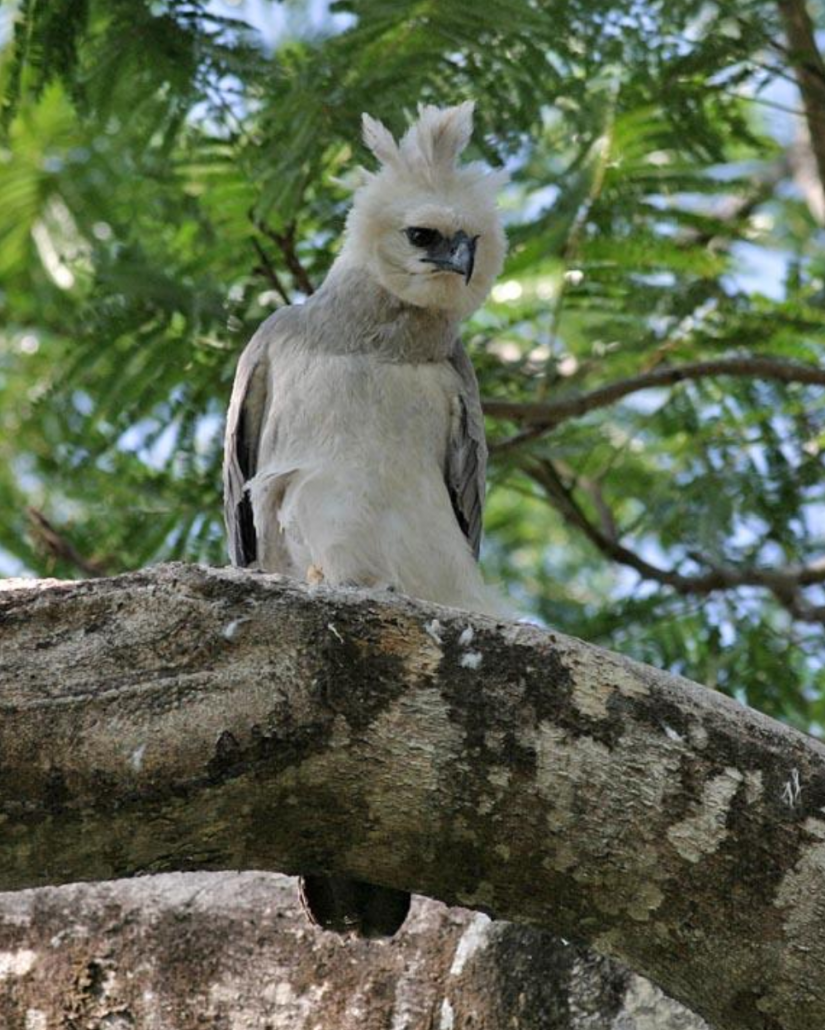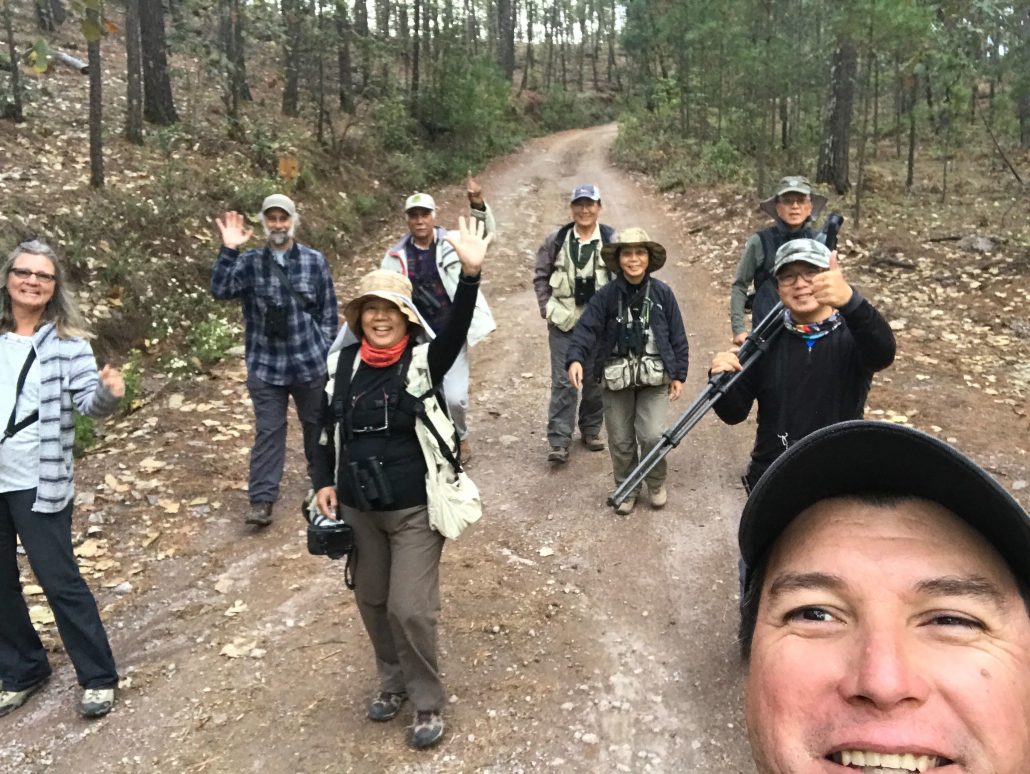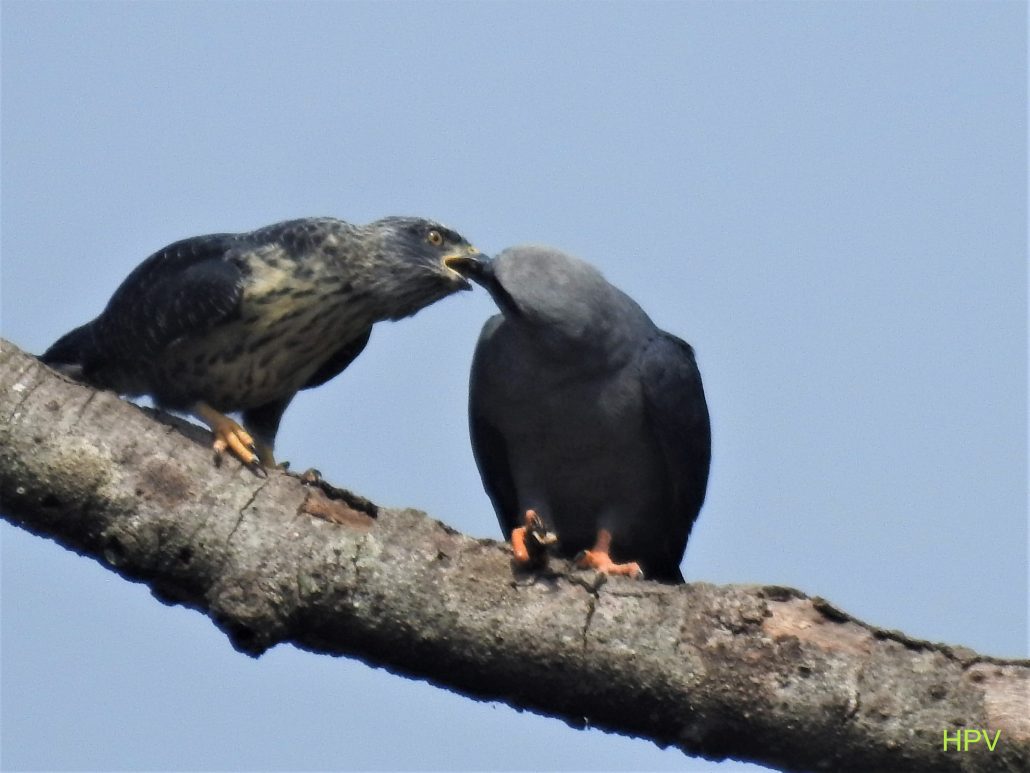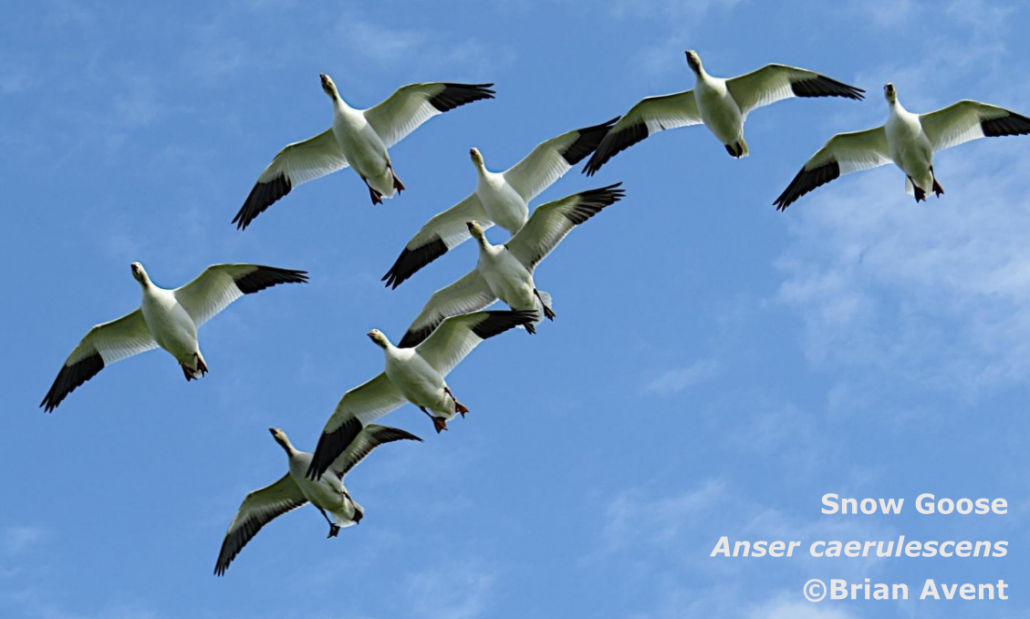Luke Tiller has his eye on raptors
October Birder of the Month
By Amanda Grennell

For Luke Tiller, lifelong outdoor enthusiast, self-taught hawk expert and tour guide, and environmental consultant, watching birds is all about their behavior.
“I like leading tours where it’s not just chasing some rare bird, but there’s some kind of spectacle,” said Luke. “I want to see something amazing that kind of knocks your socks off.”
Like many birders, Luke took a circuitous path to birding. After growing up in London and earning a degree in Philosophy, Luke found his way through various nonprofits to a management and marketing job with Connecticut Audubon. That’s how Luke discovered his love for raptors – which he describes as an “acceptable gateway” to birding.
“They’re big, they’re voracious. If you have a bald eagle flying over your head it seems to have more of an immediate impact on people,” said Luke.

When he got sick of working in offices, Luke found a way to make a living outdoors by running hawk watches on the East Coast and the Great Lakes, running the “Soaring Bird Surveys” in Israel, and guiding tours on major raptor migration routes. According to Luke there’s no magic or secret to becoming an expert in raptors – it’s comes just from watching them for a long time. After more than 15 years of focusing on raptors, Luke has definitely earned his expertise.
Unlike songbirds, raptors migrate during the day – so you can actually watch migration happening in real time. In the Americas, birds like the Swainson’s Hawk, the Broad-winged Hawk, and the Turkey Vulture migrate from the Northern continent to Central and South America in the fall (August to October), and back again in the spring (March to May). A similar migration pattern happens from Europe and Asia to Africa, for other raptor species.

Because raptors don’t usually migrate over the ocean, the land’s geography forces them to funnel through chokepoints – leading to a phenomenal number of birds in the sky.
“I’ve been in Panama when we’ve had had one million birds migrate in one day,” said Luke. “The sky gets blackened with birds.”
And what exactly keeps these powerful birds away from the water? The absence of thermals to keep them aloft. Instead of wasting energy on flapping, most raptors spend their time simply gliding from one thermal to the next. Flying distances of up to 7,000 miles, which the Swainson’s Hawk accomplishes every year, they need to be as efficient as possible. But above the massive heat sink that is the ocean, thermals don’t usually form.

In fact, Luke points out, seabirds can be quite dangerous for a raptor that ventures too far from shore. To cross between North Africa and Spain, raptors will get as high as they can above land and then coast over the Straight of Gibraltar. But sometimes they don’t make it.
“They are a fish out of water on the ocean. Gulls will force them out of the air and down to the water and drown them and eat them. And gulls don’t have talons like raptors, so they just rip them apart. It’s kind of gross.”
Some raptors, like Peregrine Falcons and Ospreys, are more adapted to life on the water, and consequently are built for lots of flapping, rather than gliding.
Apart from these natural chokepoints, raptors congregate in other places as well. The Amur Falcon, Luke says, migrate from Siberia and Korea to South Africa along the Doyang river. Before making the 3,000 mile journey over the Arabian Sea, they stop at a hydroelectric dam in Nagaland, a northeastern state in India, hundreds of thousands of birds at a time. Luke was lucky enough to guide the first commercial tour to see this gathering.

The tour was motivated by a remarkable story: with fishing stock decimated by the dam, the local people turned to the Amur Falcons as a food source, repurposing fishing nets to catch the birds. During the huge migration event, they were caught by the thousands, and within a couple years the decline in population was noticed at their wintering grounds. But when Bano Haralu, a local journalist and conservationist, uncovered the source of the population decline, multiple organizations stepped in to protect the birds. They explained the problem to the villagers subsisting on the falcons, who then decided to stop hunting the birds and invest in tourism instead.
As a keystone species, the Amur Falcons’ story is not just about the birds, it’s about the ecosystems that depend on them. With the help of the government, forest service, NGOs and local communities, zero Amur Falcons are captured or killed in northeast India now – a resounding success for the environment.
Luke is fond of many environmental success stories with raptors, citing it as another reason to enjoy hawk watching. Bald Eagles, for example, were down to 500 breeding pairs in the 1960s. But after reducing the use of DDT, their numbers have soared past ten thousand pairs. Reduction of pesticides, along with a captive-bred release program also allowed Peregrine Falcons to recover.
“When you are talking about the environment many stories are depressing. I think it is important to share stories of success, especially when the problems are usually manmade,” said Luke.
Though he’s reluctant to pick a favorite – “Favorite birds are whatever you can think of when you get asked that question, and they change often,” – Luke said his current favorite is the Harpy Eagle.

The national bird of Panama, the Harpy Eagle is endemic to South and Central America, living in pristine forest habitat. Because of this, they can be somewhat hard to find. Luke puts a sighting between uncommon and rare. But, if you know the location of a Harpy nest, chances are good, as their chicks stay around for up to a year. Luke had the great fortune to travel to a Harpy nest in Panama a couple years ago.
“We had an hour drive, a two hour boat ride, about an hour and a half hike through the jungle where it was 90 degrees and 100 percent humidity. But it was all worth it when we finally got to the nest. Here was this baby Harpy and the mother sitting together. It was pretty amazing,” said Luke. “That’s why I like hawk watching and migration. You go to interesting places and you see this incredible spectacle.”

If you’d like to learn more about hawk migration in the U.S. check out the Hawk Migration Association of North America. You can also find hawk watch site near you on Hawk Count, which maintains a database of bird counts at over 300 sites across North America.













































